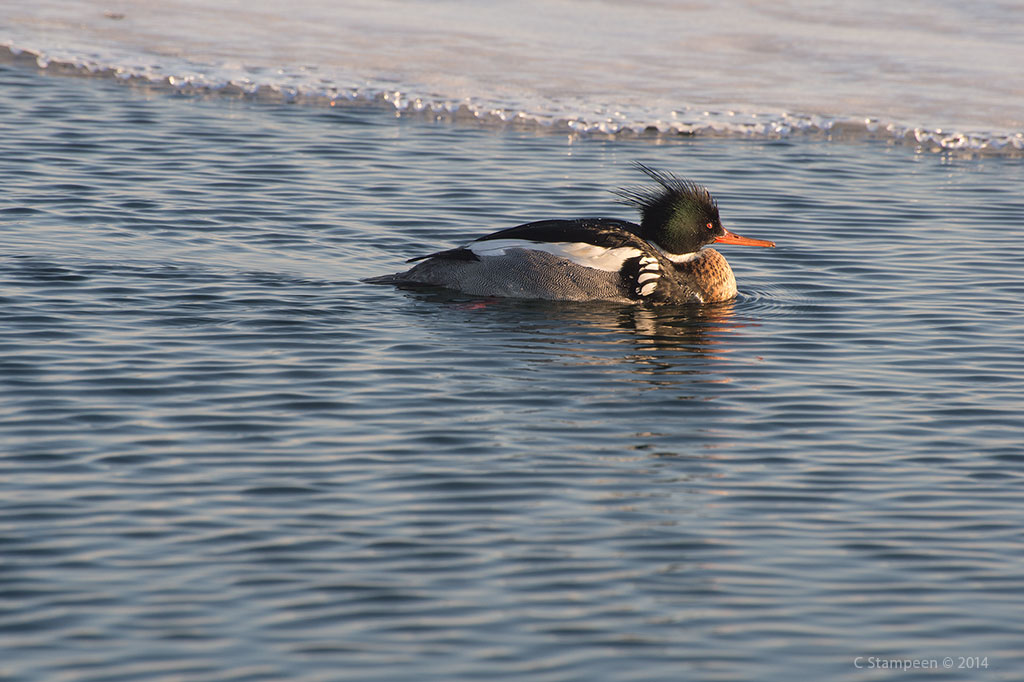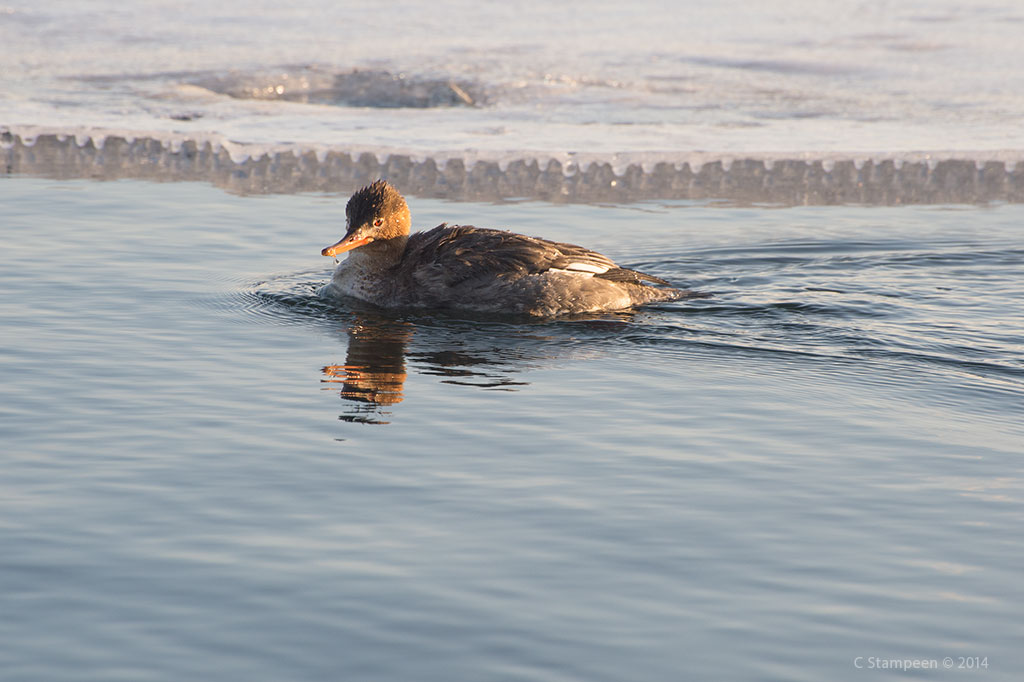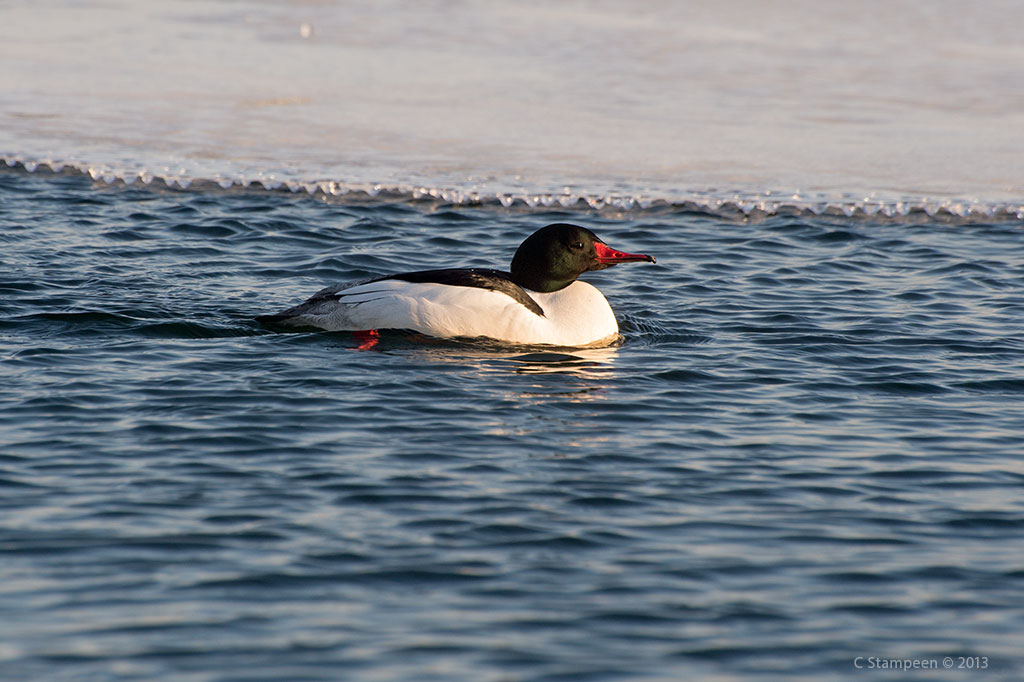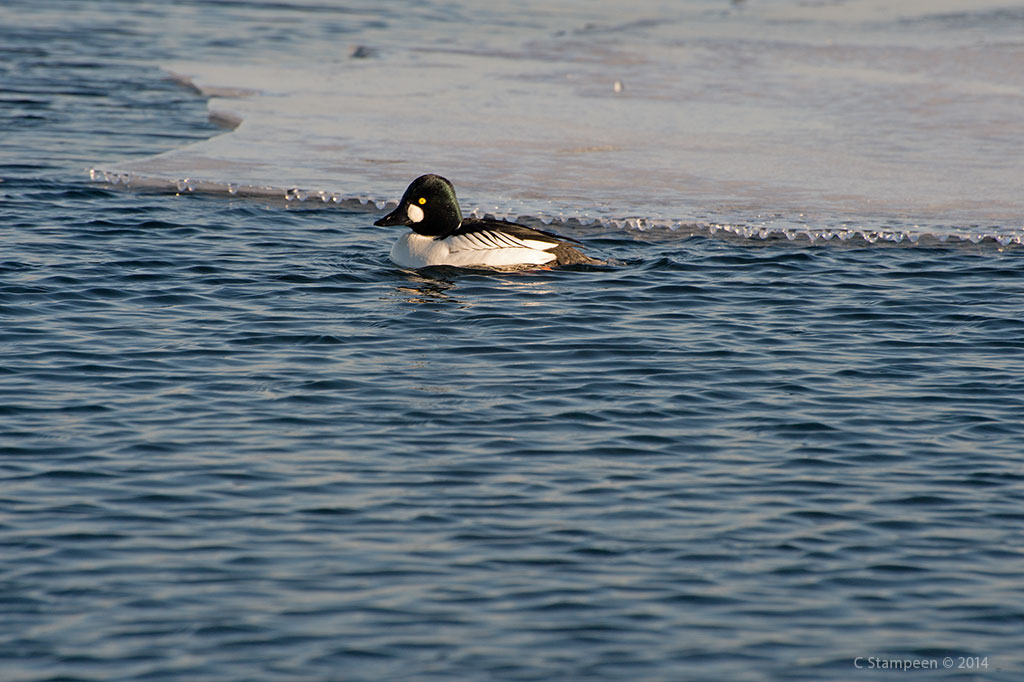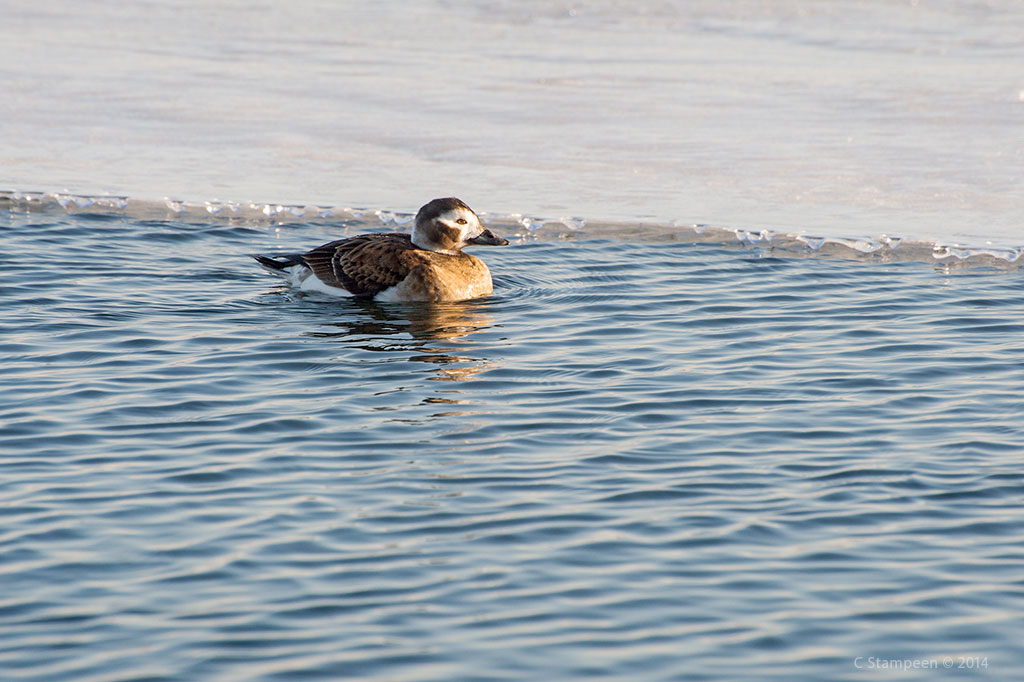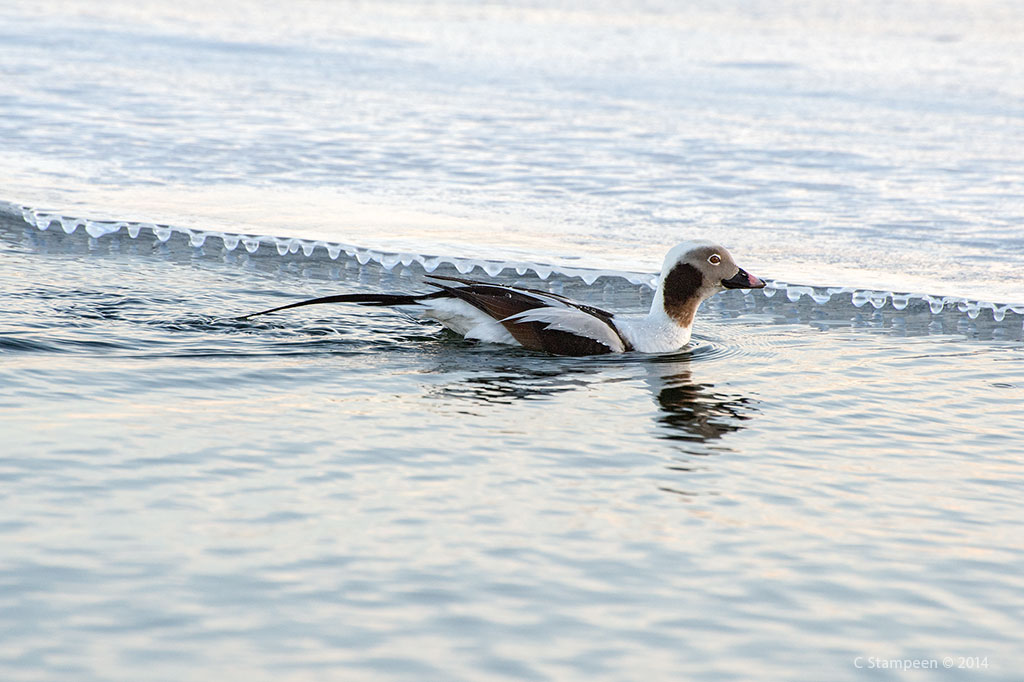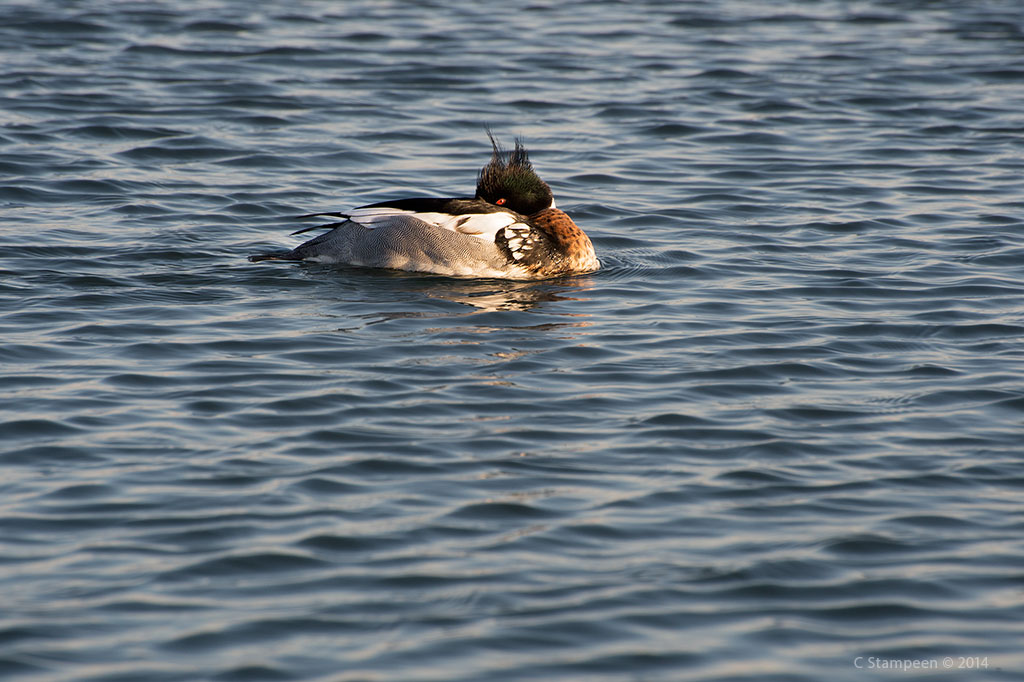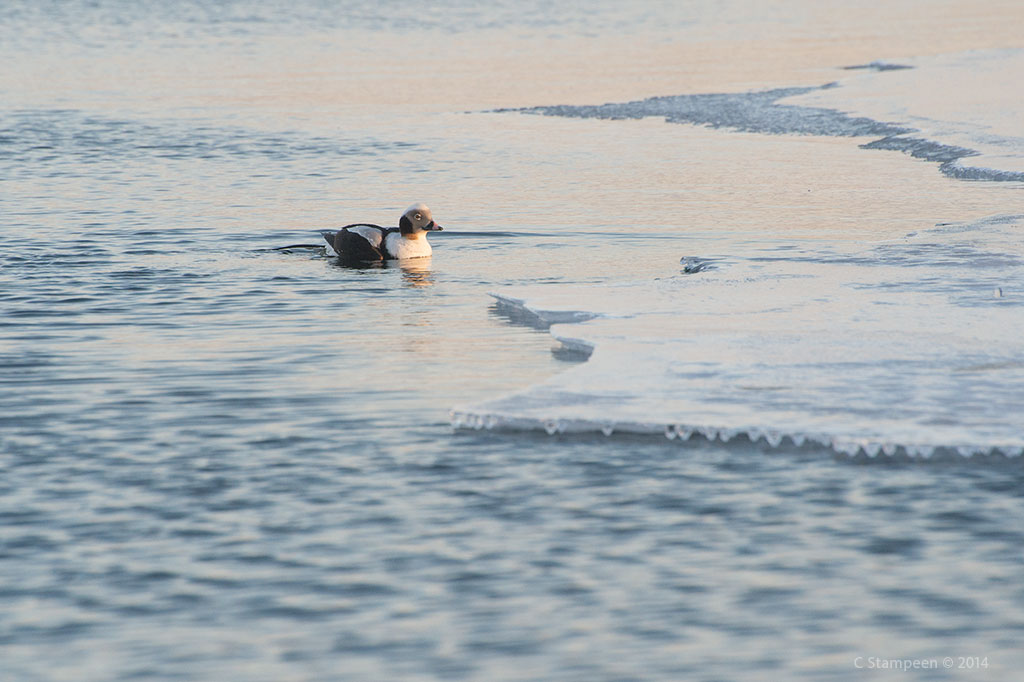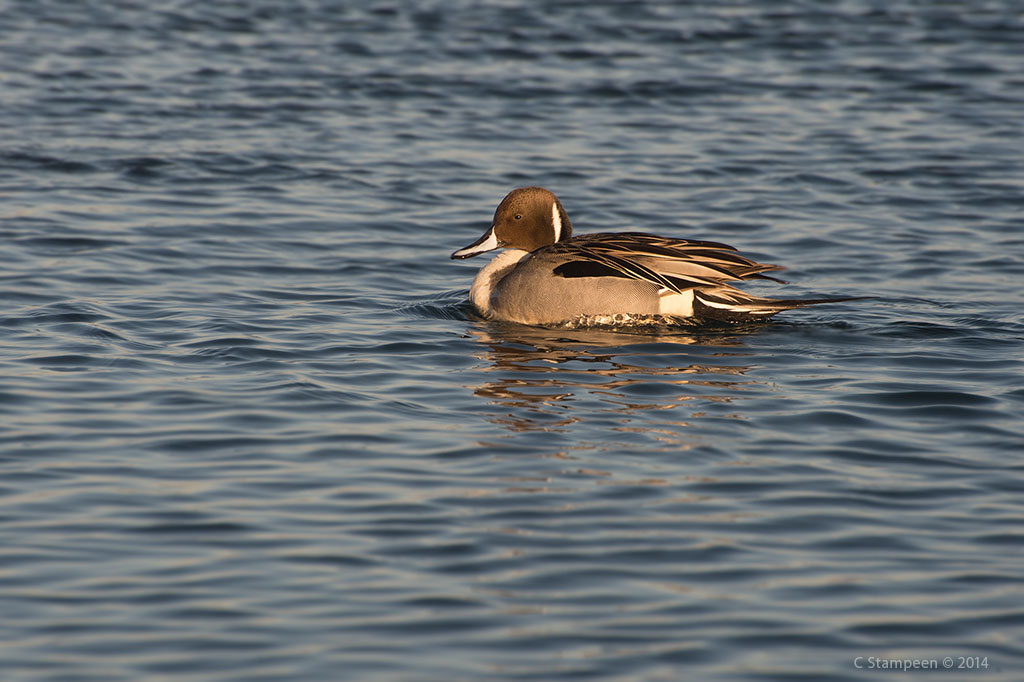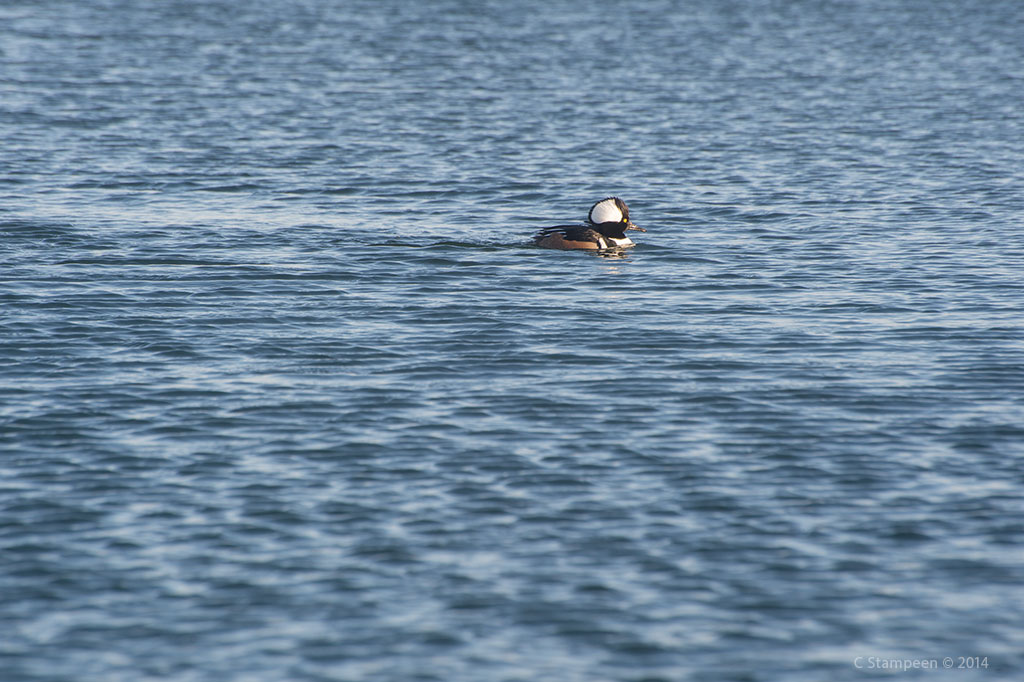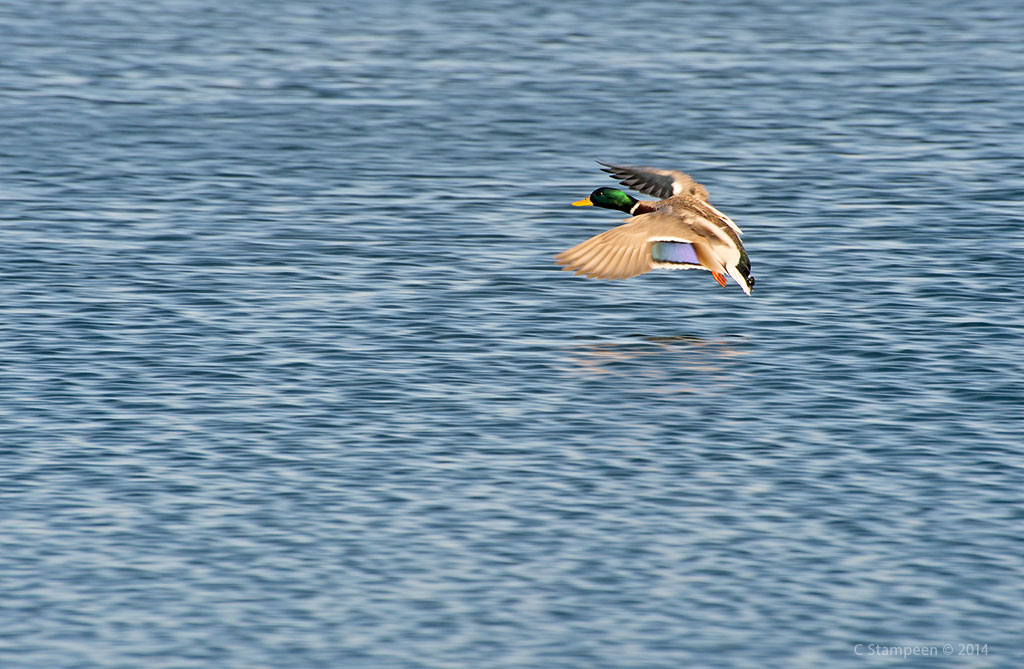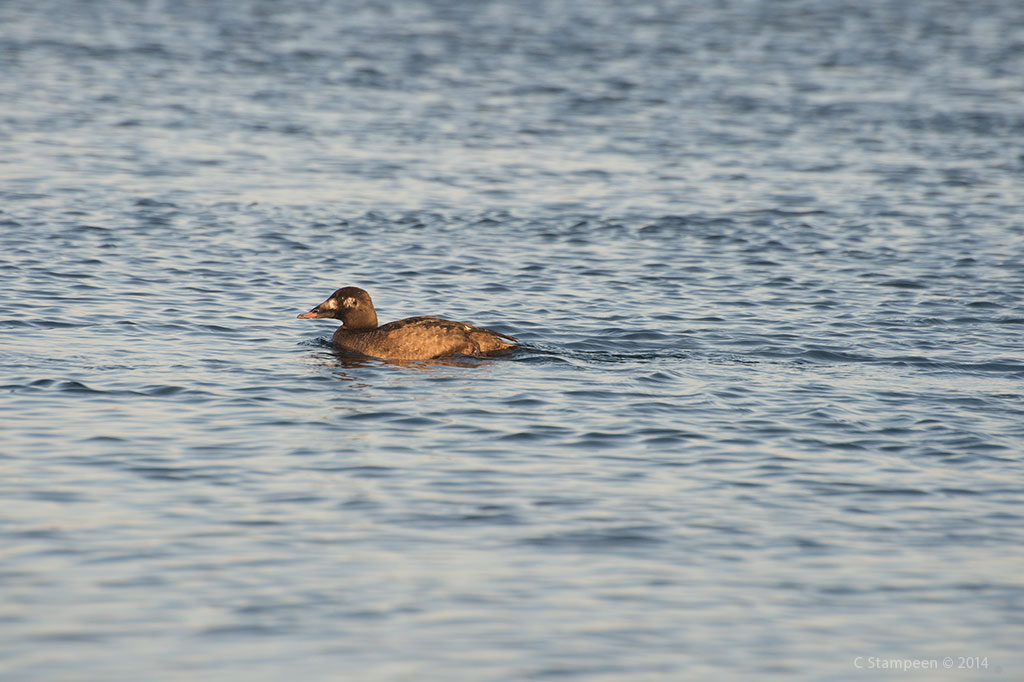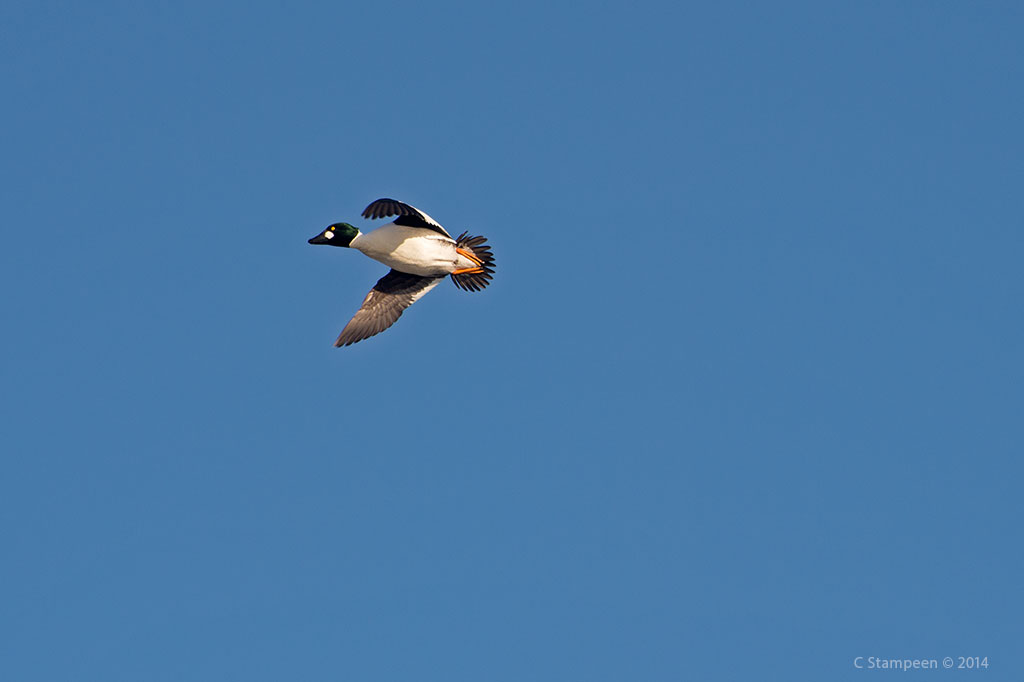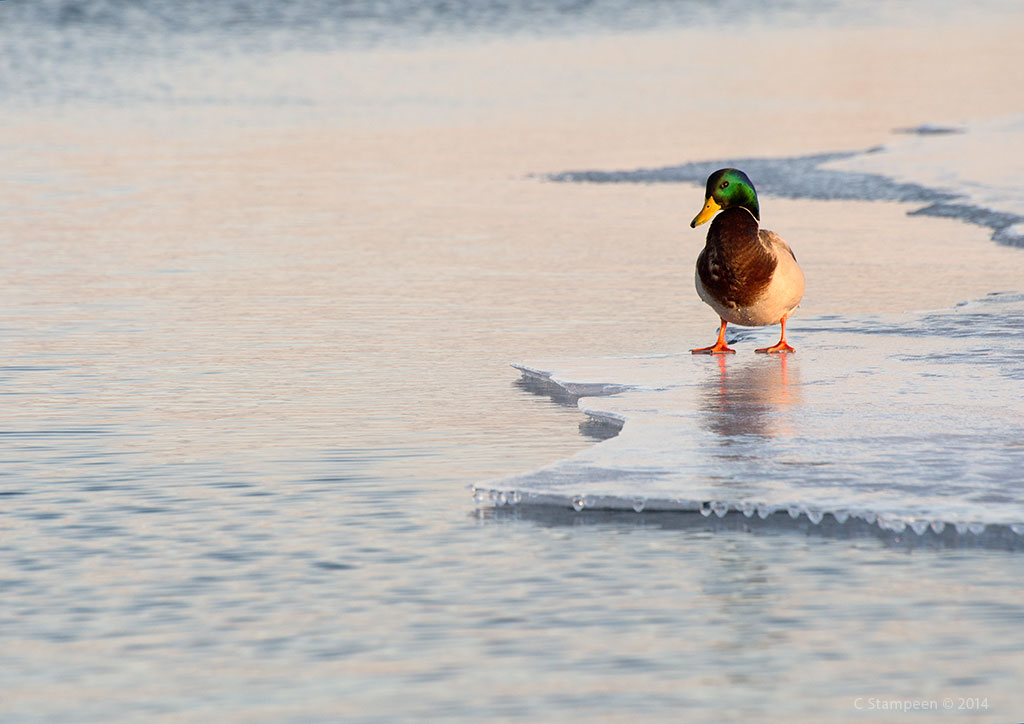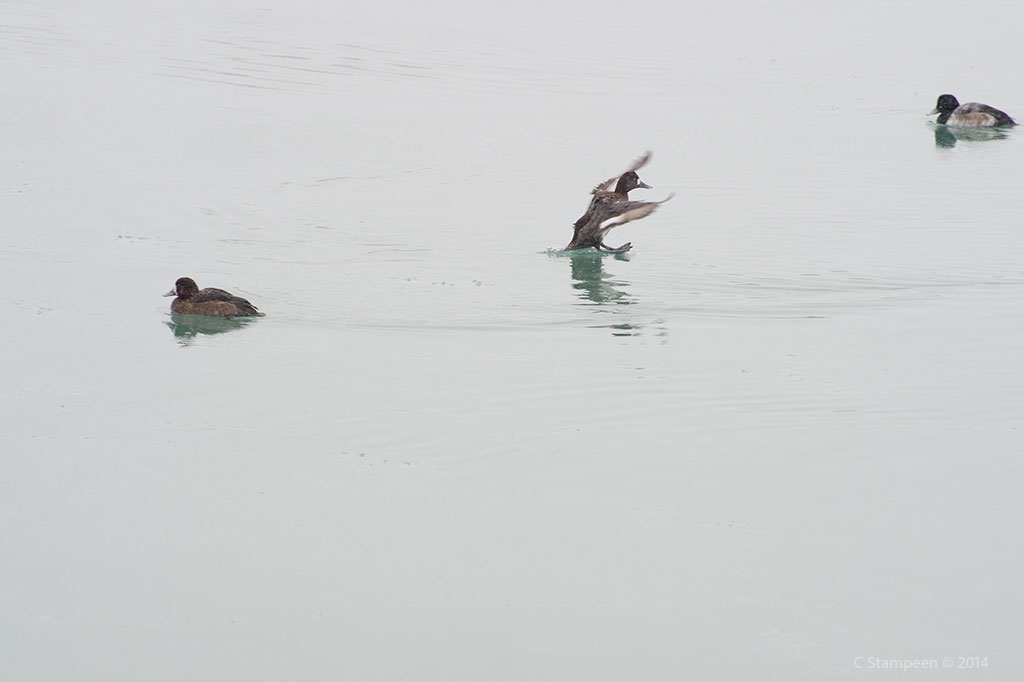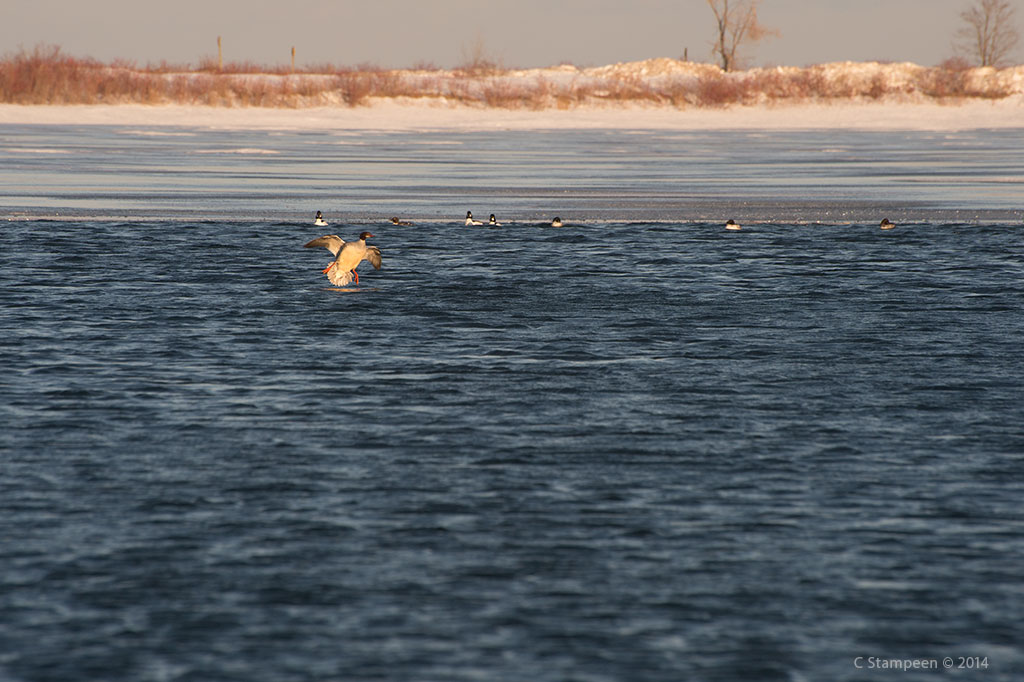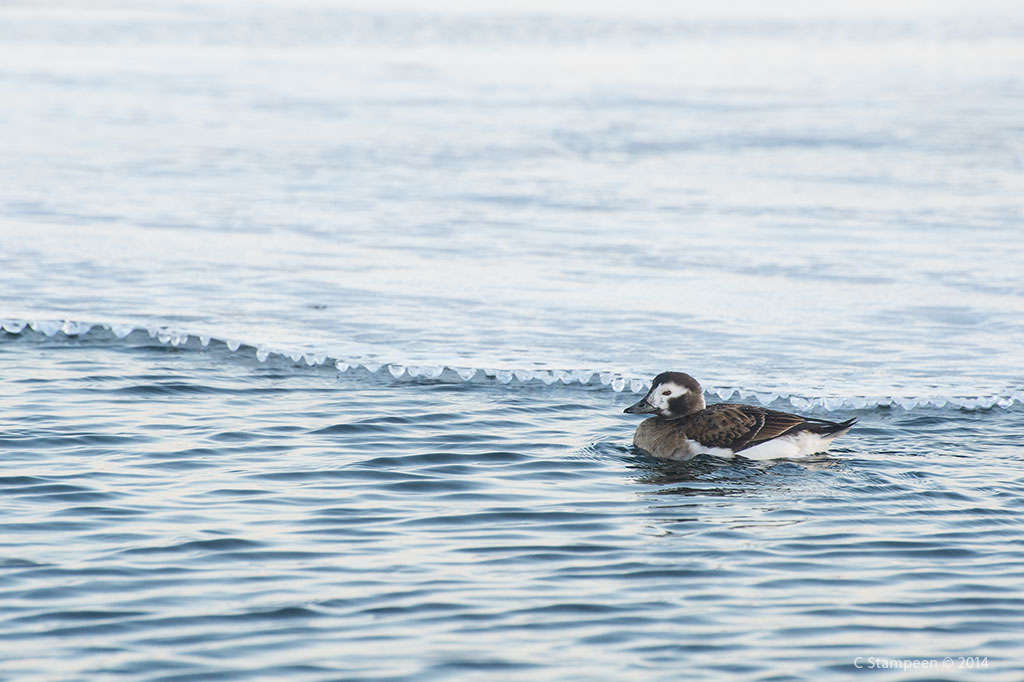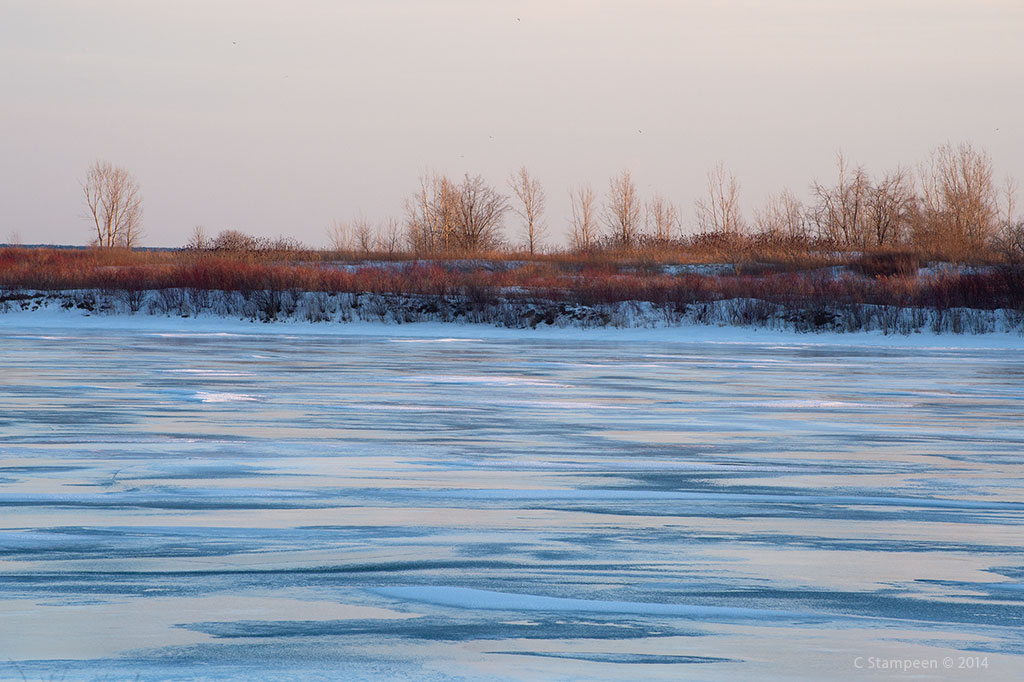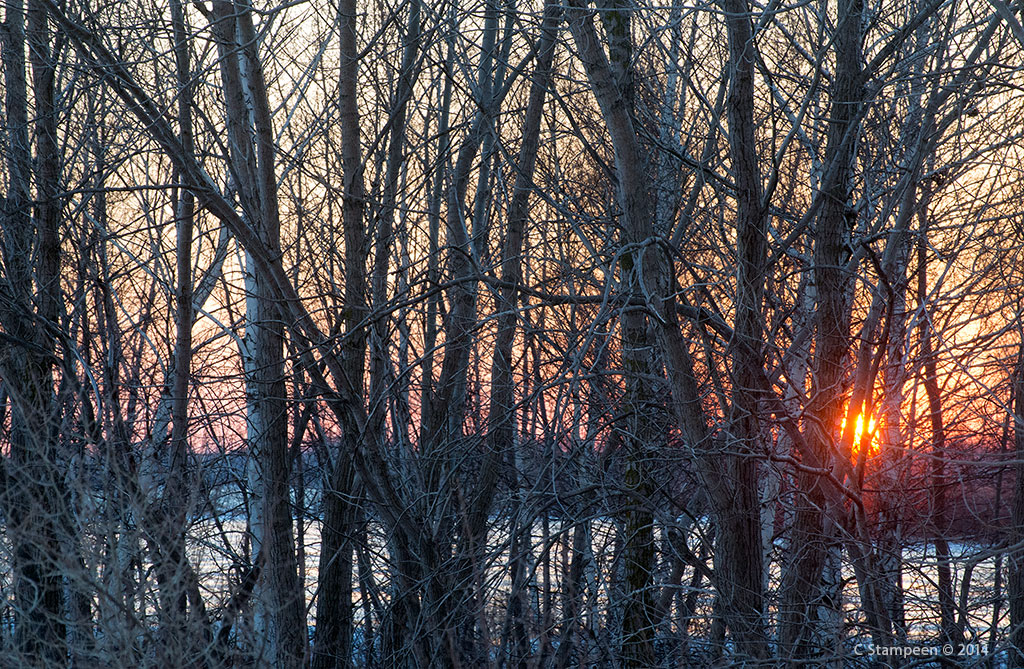My fellow isn’t impressed with ducks. It doesn’t matter which species, I excitedly show him a latest image and he dismisses it with, “it’s a duck.” If I press him, “it’s a nice picture of a duck. But…it’s a duck.” As far as I’m concerned, he couldn’t be further from the truth! These birds are elegant, colourful, beautiful, interesting, no “just” about it.
There is part of one of the ponds of the Leslie Spit that is unfrozen and gives patient photographers wonderful opportunity to watch and photograph a variety of winter species of ducks. All three species of mergansers are represented as well as a variety of others.
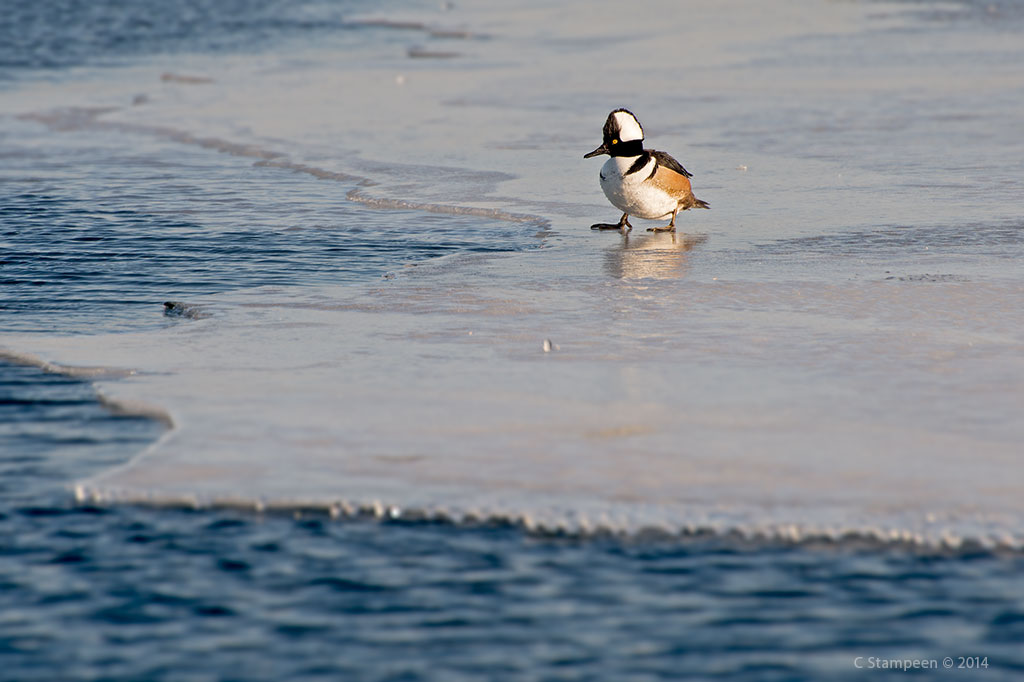
A male Hooded Merganser is unsteady on the ice. Ultimately, it ended up just plopping down in an undignified manner, then spent some time preening.
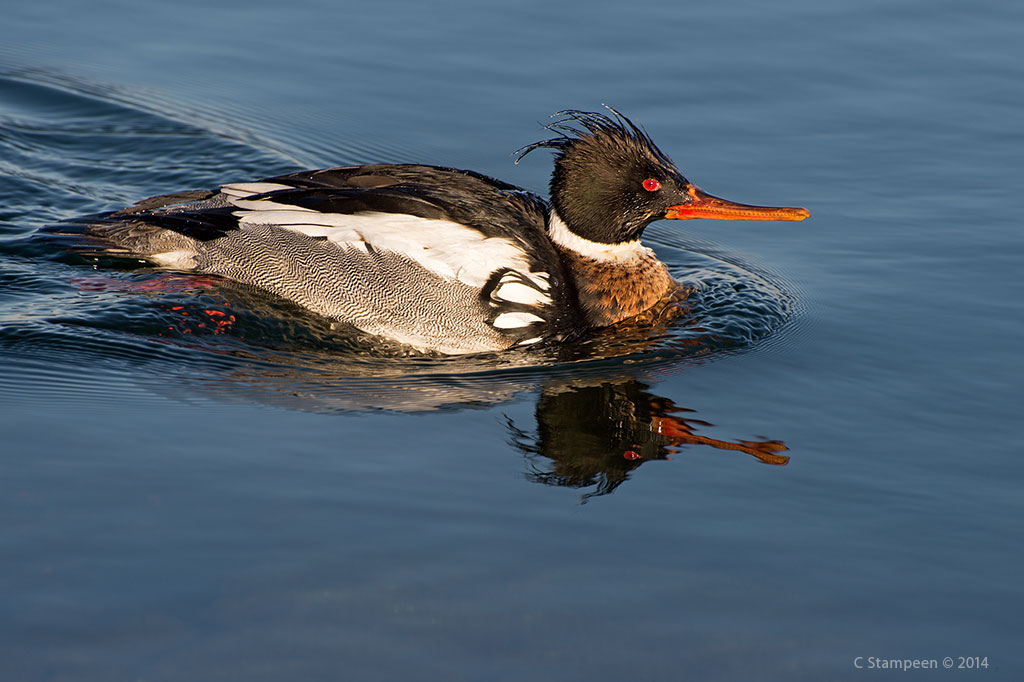
The serrated beak on this male Red-breasted Merganser can be seen here and illustrates why Mergansers are sometimes referred to as sawbills. Mergansers are fish eaters and the hooks help them hang onto their prey.
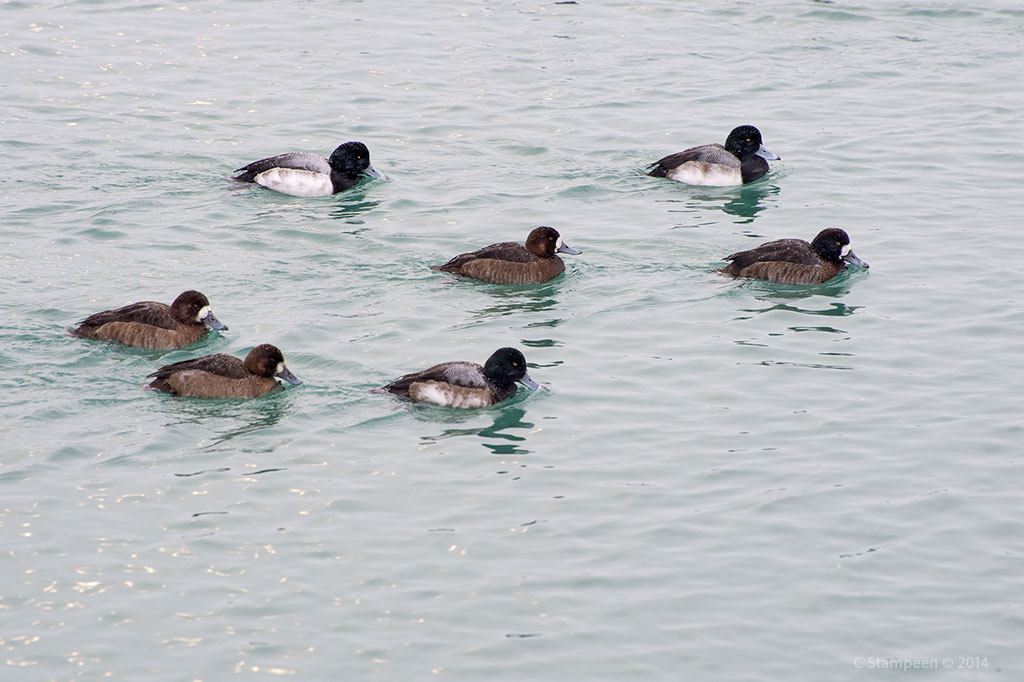
Greater Scaup: this photo was taken from a different location, but they were present on the Leslie Spit pond, though at a greater distance.
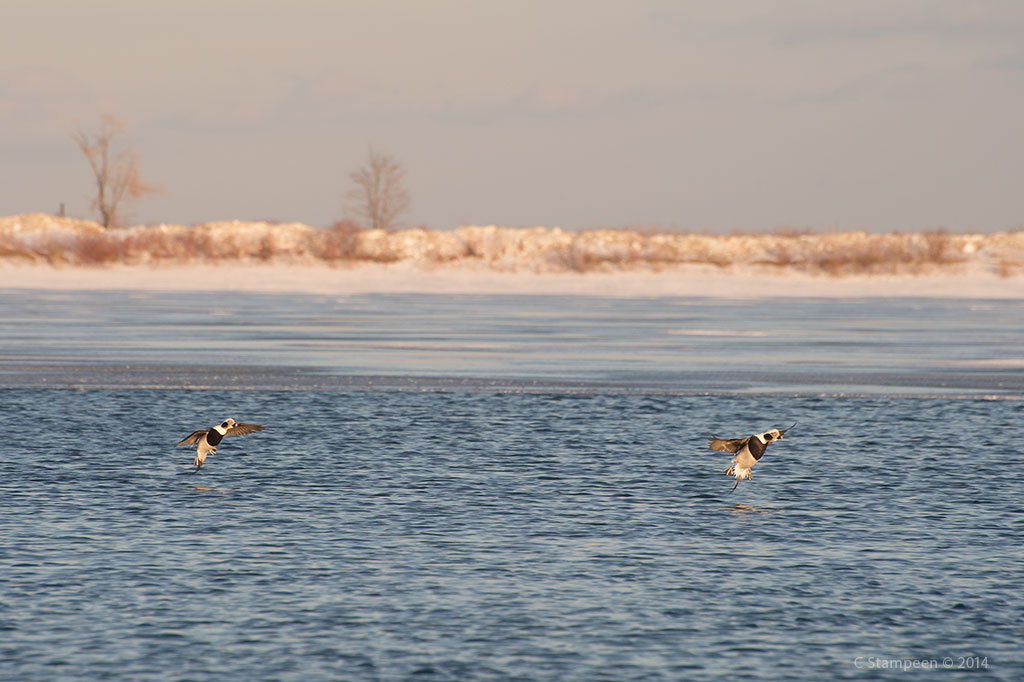
Two Oldsquaw come in for a landing. However elegant and beautiful they look, even they cannot manage looking graceful when landing.
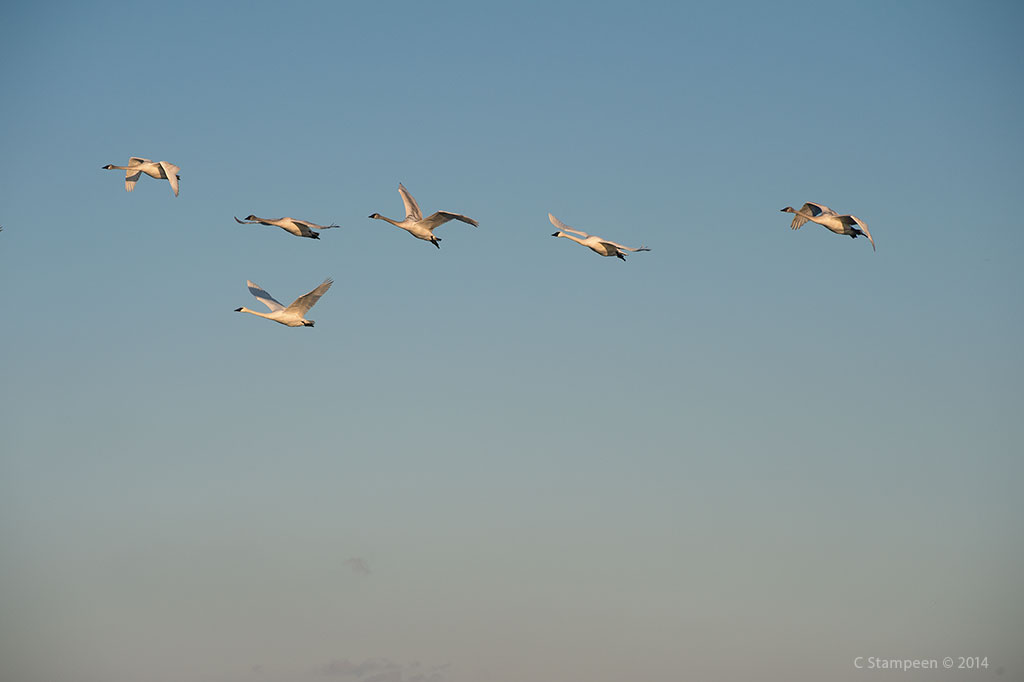
Not ducks, but a family of Trumpeter Swans. These are the heaviest birds native to North America. They usually mate for life, they don’t pair until 4-7 years old and live up to 24 years in the wild. How’s that for some interesting trivia?

